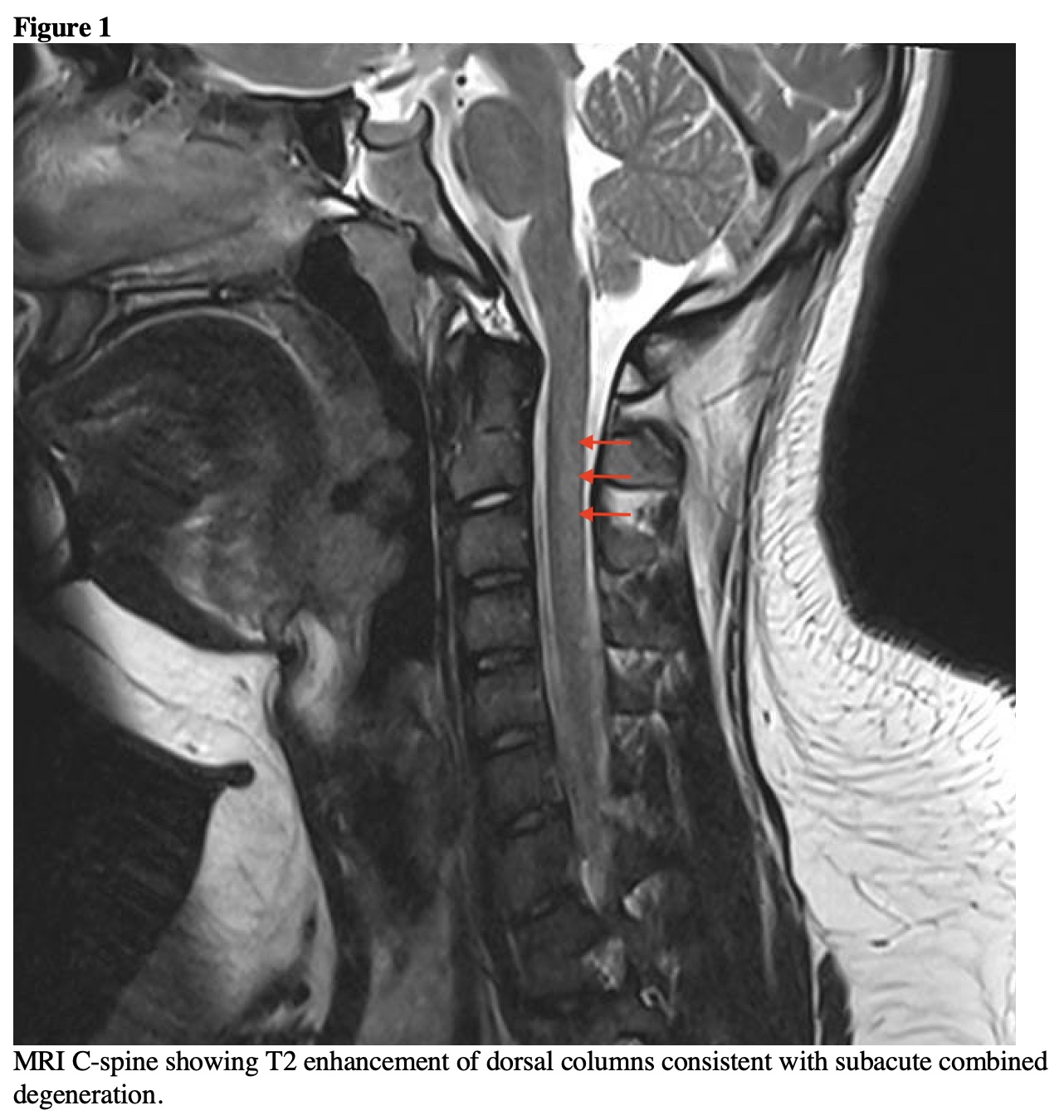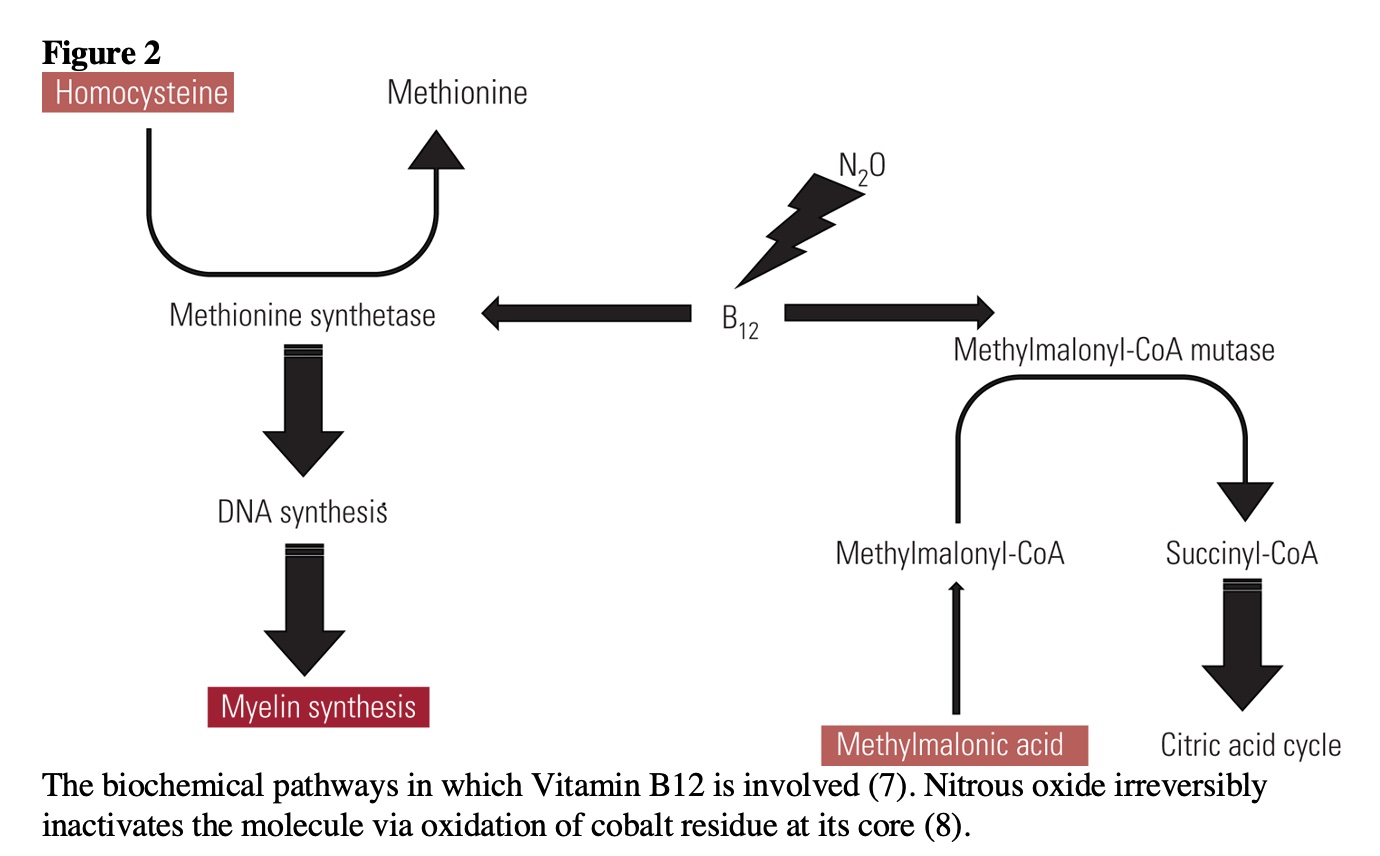Case Presentation: A 17 year-old male with a history of marijuana and nitrous oxide use presented with 4 days of paresthesia in his bilateral lower extremities, sudden onset-ataxia, gait instability, and genital numbness extending to his extremities. Comprehensive infectious and neurologic workup for Guillain-Barré syndrome, transverse myelitis, and other neuropathies all returned negative. Magnetic resonance imaging (MRI) of the spine revealed bilaterally symmetric abnormalities in the posterior medial cervical spinal cord without enhancement, confirming subacute combined degeneration (SCD) (Figure 1). Lab studies revealed B12 deficiency (< 150 pg/mL, normal 211-946 pg/mL). The patient was treated with 1000 mcg IM Cyanocobalamin every 48 hours for 6 weeks and then discharged with 1000 mcg oral daily following physical therapy in an intensive rehabilitation program. He demonstrated slow improvement throughout his hospital course, a return of sensation to his lower extremities and improvement in assisted walking.
Discussion: Nitrous oxide (N2O) gas, known as “laughing gas,” is a commonly used recreational drug (1). Among abusers, the recreational use of N2O is commonly referred to as “Whippits.” When inhaled, it can cause euphoria, sensations of numbness and tingling throughout the body, and feelings of dissociation. Its growing popularity has led to a rise in cases of nitrous oxide-induced subacute combined degeneration (SCD) of the spinal cord, as N2O irreversibly inactivates Vitamin B12, an important cofactor for myelination (2) (Figure 2).Vitamin B12 plays an essential role in many processes within the body including blood cell formation, metabolism, and myelination of nerve cells (2). In the peripheral nervous system, demyelination characteristically occurs in dorsal and lateral columns of the spinal cord, referred to as subacute combined degeneration (4).Classic symptoms of SCD include spastic paresis, vibratory and proprioceptive deficits, and gait disturbances (3). It is important for pediatricians to recognize this link between N2O abuse and vitamin B12 functional deficiency due to the popularity of Whippits use in our adolescent population.In the case described above, Vitamin B12 level was normal, but functionally deficient as N2O binds and irreversibly inactivates Vitamin B12 (5). This functional deficiency of Vitamin B12 can be confirmed by high levels of proteins that require Vitamin B12 for their metabolism, such as methylmalonic acid (MMA) and homocysteine (6) (Figure 2).
Conclusions: In summary, SCD may be seen in patients with normal levels of serum vitamin B12 if associated with abuse of N2O. It is important for providers to recognize the possibility of N2O use in the adolescent population and consider the possibility of functional deficiency in a patient with neurologic symptoms consistent with SCD. This case also highlights the importance of substance use counseling and HEADSS exams in the pediatric population, to identify those at risk and intervene before neurological symptoms occur.


